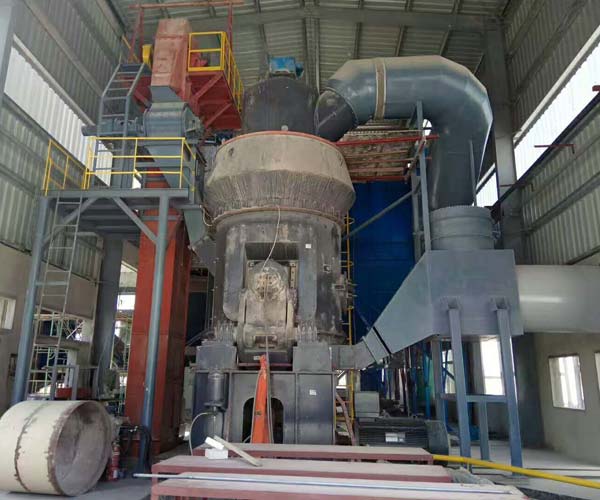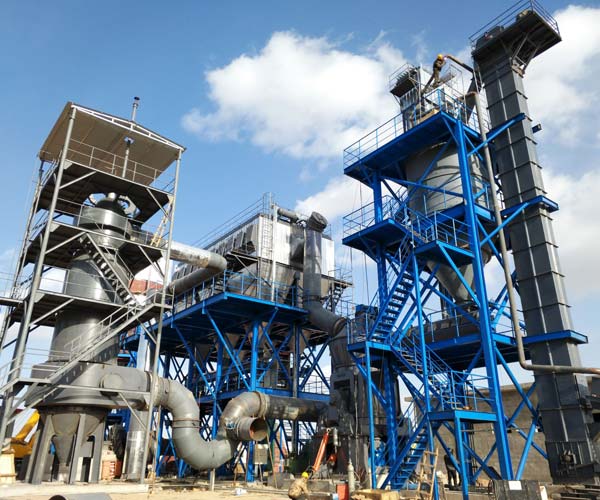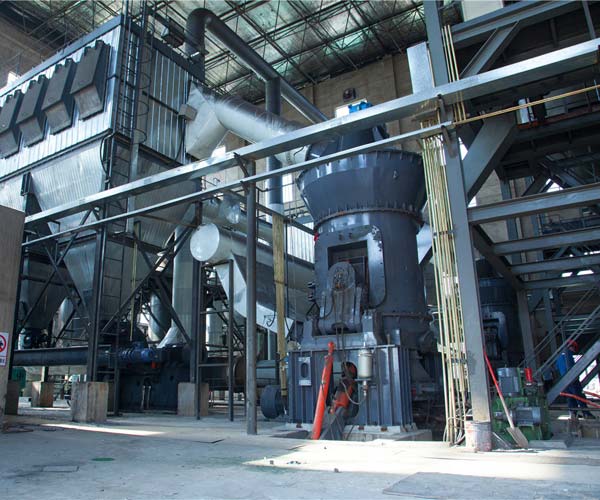
Mini Clinker Grinding Plants have emerged as a game-changer in the cement production industry, offering a more sustainable and efficient alternative to traditional, large-scale facilities. With lower initial capital costs, unparalleled flexibility, quicker setup, and improved energy efficiency, Mini Plants are revolutionizing how cement is manufactured.
24 Online Service

Cement is a fundamental building block of our modern world. It is the binding agent that holds together the structures we live and work in, from homes and offices to bridges and highways. However, the way we produce and source cement has significant implications for both our economy and the environment. In recent years, there has been a growing recognition of the need for local cement production to address various challenges, ranging from reducing transportation costs to promoting economic development and mitigating environmental impacts.
One of the primary benefits of local cement production is the substantial reduction in transportation costs. Traditional cement production facilities are often located far from the construction sites where the cement is needed. This results in significant expenses related to transporting cement from the manufacturing plant to the construction destination. These costs can be considerable and contribute to the overall price of construction projects. By producing cement locally, these transportation costs are minimized or even eliminated.
When cement production plants are situated in proximity to construction sites, the expenses associated with long-distance transportation, including fuel, labor, and maintenance, are significantly reduced. This cost reduction can have a cascading effect on the entire construction industry, making projects more financially viable, encouraging more construction, and creating jobs within the local community.
Local cement production shortens the supply chain, benefiting both producers and consumers. A shorter supply chain means faster delivery times and more reliable access to cement. This is particularly crucial for time-sensitive construction projects and emergency repairs.
Shorter supply chains also increase the flexibility of the cement industry. Local production allows producers to adapt more quickly to changes in demand and market conditions. In contrast, relying on cement from distant locations can lead to supply chain disruptions, delays, and vulnerabilities in times of crisis, such as natural disasters or supply chain interruptions.
Local cement production has a direct and positive impact on the local economy. It creates jobs, stimulates economic growth, and contributes to the overall prosperity of the region. When a cement plant is established in an area, it provides employment opportunities for local residents, including skilled and unskilled workers, engineers, and managers. The influx of new jobs can boost the local economy, increase tax revenues, and lead to additional business opportunities that support the construction industry.
Furthermore, the presence of a cement production facility can attract other related industries, such as concrete manufacturing, construction equipment suppliers, and logistics companies. This leads to the development of a local industrial ecosystem that further contributes to economic growth.
In addition to the economic advantages, local cement production offers environmental benefits. One of the most significant advantages is the reduction in greenhouse gas emissions associated with the transportation of cement over long distances. The cement industry is known for its significant carbon footprint due to the energy-intensive nature of cement production. Long-distance transportation of cement only exacerbates this problem.
When cement is produced locally, the carbon emissions associated with transportation are greatly reduced. Fewer trucks, trains, and ships are required to move the product from the factory to the construction site. This results in a reduced overall environmental impact and a smaller carbon footprint for the cement industry.
Furthermore, local production allows for better waste management practices and reduced environmental contamination. Proper disposal of waste and emissions control measures can be more effectively enforced and monitored when cement production is closer to the local community.
Local cement production can also lead to reduced energy consumption. Traditional cement production facilities are often designed to operate continuously, which can result in energy wastage during periods of low demand. In contrast, local cement plants can adjust their production schedules more easily to match local construction needs, which can result in energy savings. Additionally, modern cement production technologies are more energy-efficient, and local plants can more readily adopt these technologies to further reduce their energy consumption.
Local cement production facilities are better positioned to implement sustainable practices and adhere to environmental regulations. The proximity of production to the local community encourages accountability and adherence to environmental standards. This is because the local community and authorities are more likely to monitor and enforce compliance with regulations related to emissions, waste management, and resource consumption. As a result, local production facilities are incentivized to adopt environmentally friendly practices and technologies, such as carbon capture and storage, which can significantly reduce their carbon footprint.

Cement production is a critical industry worldwide, providing the essential building material for infrastructure development. However, traditional cement manufacturing processes are resource-intensive, contributing to environmental concerns and escalating costs. To address these issues, Mini Clinker Grinding Plants have emerged as a more sustainable and efficient alternative to conventional cement production facilities.
A Mini Clinker Grinding Plant, as the name suggests, is a compact facility dedicated to the grinding of clinker, which is the primary raw material in cement production. Clinker is a nodular material that forms the base of cement, consisting primarily of calcium silicates and alumina. The process of clinker grinding involves reducing clinker nodules into a fine powder, which is subsequently mixed with other materials such as gypsum and additives to produce cement.
The primary distinction between a Mini Clinker Grinding Plant and a conventional cement production facility lies in their scale and operational scope. Mini plants are designed for a significantly smaller production capacity compared to their larger counterparts. While conventional cement plants can have capacities ranging from thousands to millions of tons annually, Mini Clinker Grinding Plants typically produce cement on a smaller scale, making them a more versatile and eco-friendly solution.
Mini Clinker Grinding Plants are typically designed with a production capacity ranging from 50 to 300 tons of clinker per day. In comparison, traditional cement production facilities can produce several thousand tons of clinker daily. This stark contrast in scale provides Mini Plants with distinct advantages.
The clinker grinding process is a crucial step in cement production and a key focus of Mini Clinker Grinding Plants. To appreciate the significance of this process, it is essential to understand its role and the challenges it poses.
Clinker is produced by heating raw materials, primarily limestone, clay, and iron ore, in a kiln at high temperatures.
The resultant clinker nodules are then finely ground in a ball mill, a roller press, or a vertical roller mill. This grinding process transforms the clinker into cement, which can subsequently be blended with gypsum and other additives to meet specific product requirements.
The clinker grinding process demands substantial energy, mainly due to the mechanical grinding of clinker particles. Traditional cement plants are known for their energy-intensive operations, which can result in high operational costs and environmental impacts.
Mini Clinker Grinding Plants are strategically designed to address the energy and environmental challenges associated with the clinker grinding process. Here’s how they fit into this critical stage of cement production:
Mini Plants are inherently more energy-efficient due to their smaller size. With reduced clinker grinding capacity, they consume less energy during the process. Additionally, modern Mini Plants often incorporate energy-saving technologies, such as vertical roller mills and efficient cooling systems, further enhancing their energy performance.
By being located closer to raw material sources and local markets, Mini Clinker Grinding Plants significantly reduce the carbon footprint associated with transportation. The environmental benefits extend beyond emissions reduction to include lower resource consumption and a decreased impact on local ecosystems.

Mini Clinker Grinding Plants have gained prominence as an innovative and cost-effective solution for the cement industry. These compact facilities are designed to address the specific needs of small and medium-sized enterprises (SMEs), and they have demonstrated their potential to yield impressive returns on investment (ROI).
To better understand the cost-effectiveness and ROI potential of Mini Clinker Grinding Plants, it is instructive to examine real-world examples and case studies from regions and companies that have successfully implemented these facilities.
Cement Company, based in Pakistan, has implemented Mini Clinker Grinding Plants in various regions of the country. By adopting this cost-effective approach, they were able to reduce the transportation costs associated with raw materials and finished products. This initiative resulted in substantial cost savings, a shorter ROI period, and a positive impact on the local communities by generating employment opportunities and supporting local infrastructure.
Ethiopia has experienced a boom in its cement industry, with numerous small and medium-sized cement producers adopting Mini Clinker Grinding Plants. These facilities have helped local businesses meet the growing demand for cement and compete with larger companies. By reducing production costs and increasing production efficiency, these small cement producers have experienced remarkable returns on their investment, driving economic development in the region.
Eco-Efficiency in the European Union:
In the European Union, various countries have promoted eco-efficiency and sustainability in the cement industry. Mini Clinker Grinding Plants, with their energy-efficient design and reduced carbon emissions, have played a crucial role in achieving these objectives. By adopting these technologies, European cement manufacturers have not only reduced environmental impact but also realized long-term cost savings and positive ROI.
Grassroots initiatives in India have witnessed the implementation of Mini Clinker Grinding Plants in rural and economically disadvantaged areas. These projects have empowered local communities by creating job opportunities and fostering self-reliance. The positive ROI from these mini plants has been instrumental in uplifting these regions, both economically and socially.
Mini Clinker Grinding Plants not only contribute to the cost-effectiveness of cement production but also have a significant impact on local communities. By reducing transportation distances, these plants help mitigate environmental concerns associated with long-haul transportation. They also stimulate economic growth by generating local employment opportunities and contributing to regional development. This symbiotic relationship between industry and community underscores the social benefits of mini plants.
Furthermore, the environmental benefits of Mini Clinker Grinding Plants, such as reduced emissions and energy-efficient processes, align with the growing global commitment to sustainability. As these plants reduce their carbon footprint, they aid in mitigating climate change and promote a cleaner, more eco-friendly approach to cement production. This has the dual benefit of attracting environmentally conscious investors and consumers while safeguarding the local environment and health.
Our Projects
Copyright © ZENITH, All Right Reserved.
